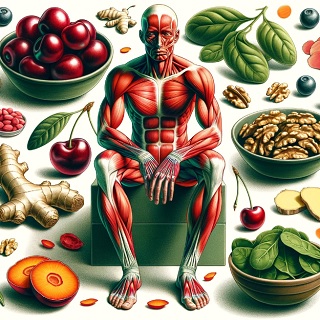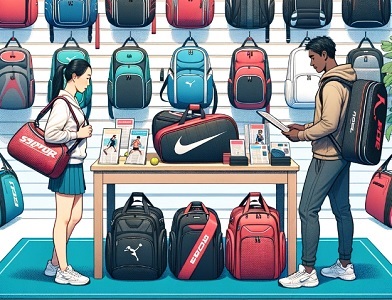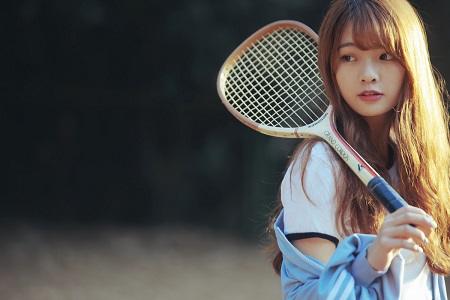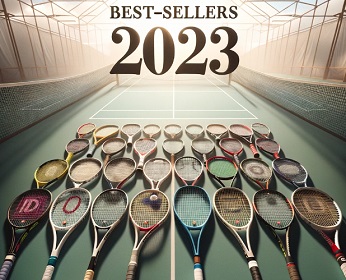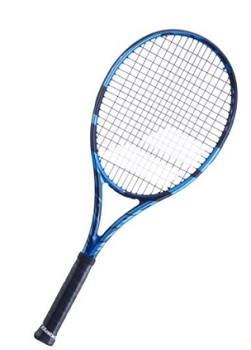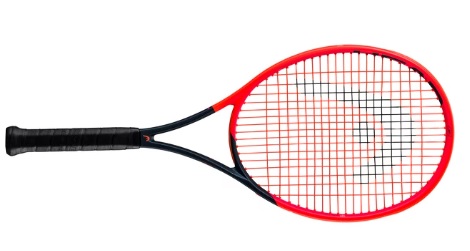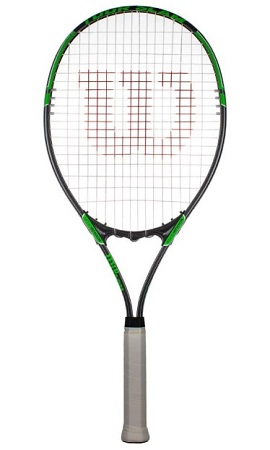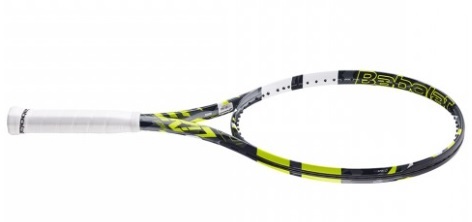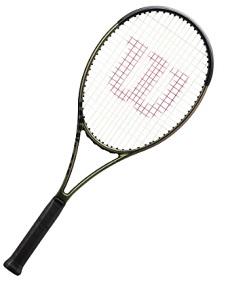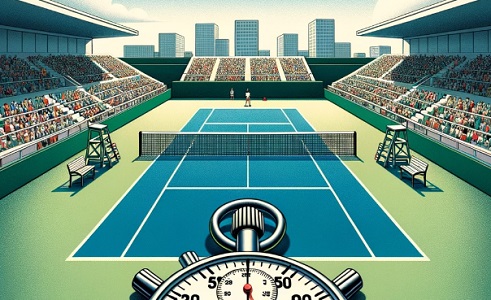Comment choisir et utiliser les grip et surgrip de tennis
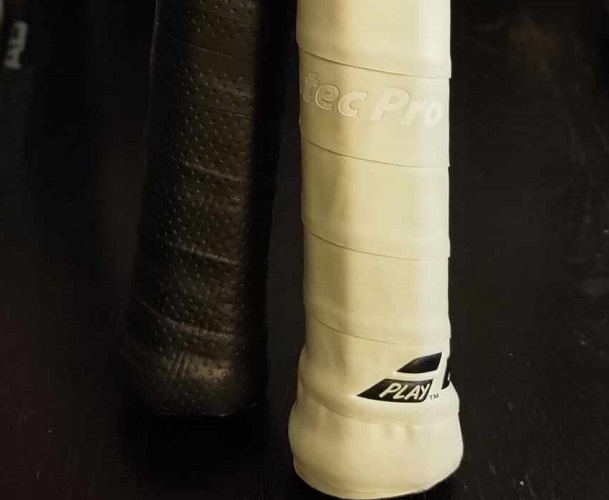
Choisir et utiliser les bonnes poignées (grips) et sur-poignées (surgrips) est essentiel pour maximiser votre performance et confort au tennis. Dans cet article, nous allons explorer les différents types de grips et surgrips disponibles, comment les choisir en fonction de vos besoins et comment les appliquer correctement sur votre raquette.
Comprendre la Différence entre Grip et Surgrip
Le grip
- C’est la couche principale qui enveloppe le manche de votre raquette.
- Il offre une prise en main confortable et absorbe une partie de la transpiration.
- Les grips sont généralement faits de cuir ou de matières synthétiques.
Le surgrip
- Il se place par-dessus le grip principal pour fournir une couche supplémentaire d’absorption de la transpiration et de confort.
- Les surgrips sont plus fins et peuvent être changés plus fréquemment.
- Ils sont souvent utilisés par les joueurs qui transpirent beaucoup ou qui cherchent un meilleur confort.
A quoi sert le surgrip ?
Le surgrip, un accessoire essentiel dans l’équipement d’un joueur de tennis, sert principalement à améliorer la prise en main de la raquette, assurant ainsi un contrôle et une stabilité accrus lors des frappes de balle. En s’enroulant autour du grip d’origine, le surgrip offre une couche supplémentaire d’absorption, ce qui est particulièrement bénéfique pour les joueurs qui transpirent abondamment des mains, car il aide à maintenir la raquette fermement en main sans glissement. De plus, il contribue à réduire les vibrations transmises au bras lors de l’impact avec la balle, minimisant ainsi le risque de blessures telles que le tennis elbow. Le surgrip se caractérise par sa facilité d’application et son coût abordable, permettant aux joueurs de le changer régulièrement pour assurer une performance optimale. Il est également disponible dans une variété de textures, d’épaisseurs et de matériaux, offrant ainsi aux joueurs la possibilité de personnaliser leur prise en fonction de leurs préférences personnelles et des conditions de jeu. En somme, le surgrip est un outil indispensable pour tout joueur de tennis cherchant à améliorer sa prise en main, à prévenir les blessures et à personnaliser son expérience de jeu.
Choisir le Bon Type de Grip
Choisir le bon type de grip est une décision cruciale pour tout joueur de tennis, car il influence directement la sensation de la raquette en main et le contrôle de la balle. Les grips en cuir, bien qu’un peu plus fermes, offrent une sensation authentique et un excellent retour d’information, les rendant populaires parmi les joueurs avancés et les professionnels qui recherchent une précision maximale. D’un autre côté, les grips synthétiques sont fabriqués à partir de divers matériaux comme l’EVA ou le polyuréthane, offrant une variété d’options en termes de douceur, d’absorption de la transpiration et de durabilité. Ces grips sont parfaits pour les joueurs de tous niveaux, offrant un équilibre entre confort et performance. Pour les joueurs qui ont tendance à transpirer des mains, choisir un grip avec une bonne capacité d’absorption est essentiel pour maintenir une prise ferme et stable tout au long du match. De plus, la texture du grip joue également un rôle important, avec des options allant de lisse à très texturé, permettant une personnalisation supplémentaire en fonction des préférences personnelles. En fin de compte, prendre le temps d’expérimenter avec différents types et marques de grips, tout en prenant en considération des facteurs tels que le climat, le style de jeu et les préférences personnelles, aidera à assurer que vous choisissez le grip qui répondra le mieux à vos besoins et améliorera votre performance sur le court.
Achetez un bon grip en cuir sur Amazon : https://amzn.to/45Ru45W
Achetez ce grip abordable et adhérent : https://amzn.to/40lXQyq
Achetez ce grip absorbant sur Amazon : https://amzn.to/46pPCad
Choisir le Bon Type de Surgrip
Le choix du bon type de surgrip est essentiel pour tout joueur de tennis souhaitant optimiser sa prise en main et son confort sur le court. Les surgrips offrent une variété d’options en termes de texture, d’épaisseur et de matériel, permettant ainsi une personnalisation selon les préférences individuelles et les conditions de jeu. Pour ceux qui transpirent abondamment des mains, un surgrip hautement absorbant est idéal, car il aide à maintenir une adhérence solide et prévient le glissement de la raquette. Les joueurs à la recherche d’un contrôle accru peuvent opter pour un surgrip plus fin et plus tactique, offrant une meilleure sensation de la raquette et une précision améliorée. Les surgrips en matériaux synthétiques tels que le polyuréthane sont populaires pour leur douceur et leur capacité d’absorption, tandis que ceux avec des textures spécifiques peuvent aider à améliorer l’adhérence. Il est important de noter que l’épaisseur du surgrip peut également affecter la taille du manche, donc les joueurs doivent choisir en conséquence pour s’assurer qu’ils maintiennent une prise confortable. En fin de compte, expérimenter avec différents types de surgrips et prendre en considération des facteurs tels que la transpiration, le style de jeu et le confort personnel, aidera les joueurs à trouver le surgrip parfait, améliorant ainsi leur expérience de jeu et augmentant leur performance sur le court.
Achetez ces surgrips confort sur Amazon : https://amzn.to/3QeJcnW
Achetez ces surgrips adhérent premium sur Amazon : https://amzn.to/40le4rC
Achetez ces surgrips multi couleur sur Amazon : https://amzn.to/3u4GoT0
Comment Appliquer le Grip et le Surgrip
Retirez l’ancien grip.
Décollez le film protecteur du nouveau grip et trouvez l’extrémité biseautée.
Commencez à enrouler le grip autour du manche en partant du bas, en vous assurant de le tendre légèrement pour un ajustement serré.
Une fois arrivé en haut, coupez l’excédent de grip et fixez-le avec le ruban adhésif fourni.
Comment Appliquer le Grip et le Surgrip
Retirez le film protecteur du surgrip.
Trouvez l’extrémité biseautée et commencez à l’enrouler par-dessus le grip, en partant du bas du manche.
Enroulez le surgrip en le chevauchant légèrement à chaque tour et en le tendant pour un ajustement serré.
Fixez le surgrip en haut du manche avec le ruban adhésif.
Conseils pour le Choix et l’Utilisation
Lors du choix et de l’utilisation de grips et de surgrips de tennis, il est crucial de prendre en considération plusieurs facteurs pour garantir une expérience de jeu optimale et prévenir les blessures. Premièrement, évaluez le niveau de transpiration de vos mains, car cela influencera directement le type de matériel et la capacité d’absorption nécessaires pour maintenir une prise ferme et stable. Les joueurs avec des mains plus sèches pourraient préférer un grip plus doux et rembourré pour le confort, tandis que ceux qui transpirent davantage devraient opter pour des matériaux hautement absorbants. Deuxièmement, tenez compte de la taille de votre main et de la prise que vous utilisez, car la taille et l’épaisseur du grip peuvent affecter la sensation de la raquette et le contrôle de la balle. Assurez-vous que le grip ou le surgrip n’ajoute pas trop de volume, ce qui pourrait rendre la prise en main inconfortable et affecter votre jeu. Troisièmement, faites attention à la texture du grip ou du surgrip, car cela peut fournir une adhérence supplémentaire et améliorer la manipulation de la raquette, surtout dans des conditions humides ou transpirantes. Les joueurs qui cherchent à améliorer leur spin peuvent bénéficier de textures plus prononcées. Quatrièmement, changez régulièrement votre grip ou surgrip pour assurer une performance constante, car ils peuvent s’user et perdre de leur efficacité avec le temps et l’utilisation. Enfin, n’hésitez pas à expérimenter avec différentes marques et types jusqu’à ce que vous trouviez celui qui convient le mieux à votre style de jeu et à vos préférences personnelles, car le confort et la confiance dans votre équipement peuvent faire une différence significative sur le court.
En suivant ces conseils, vous serez en mesure de choisir et d’utiliser le bon grip et surgrip pour améliorer votre jeu et votre confort sur le court de tennis. N’oubliez pas qu’un bon équipement est la clé pour une performance optimale et le plaisir du jeu.

